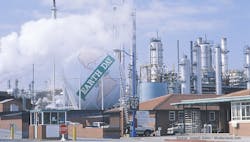The first Earth Day took place on April 22, 1970. Twenty million Americans, about 10% of the U.S.’s population then, demonstrated against the prevalent attitude at the time of ignoring or downplaying environmental issues. Now, 50 years later, Earth Day remains an important event to draw attention to necessary actions to protect the planet. Unfortunately, threats to the environment also persist, including at least one that certainly wasn’t as apparent in 1970.
In the 1960s, public awareness of environmental issues was increasing, thanks in substantial part to the publication of Rachel Carson’s “Silent Spring.” That landmark book warned about the harmful impact of pesticides and put the chemical industry in general in a more critical light. (See: “A Milestone Book Turns 50.")
However, Earth Day actually emerged as a result of an oil spill in Santa Barbara, Calif., in 1969. That mishap spurred action for an event to call attention to environmental issues.
The Earth Day Network (EDN), Washington, D.C., the guiding force behind ongoing efforts, provides on its website (www.earthday.org) a backgrounder on the genesis of the event.
Gaylord Nelson, a Democratic senator from Wisconsin, came up with the idea for a national day to focus on the environment after witnessing the damage caused by the Santa Barbara oil spill. He raised the idea for a “national teach-in on the environment.” He enlisted Pete McCloskey, a Republican congressman from California, to serve as his co-chair. The date — April 22 — was chosen because it fell between spring break and final exams. Rallies took place throughout the U.S. in 1970, with thousands of colleges and universities organizing protests against the deterioration of the environment.
According to EDN, “Groups that had been fighting individually against oil spills, polluting factories and power plants, raw sewage, toxic dumps, pesticides, freeways, the loss of wilderness and the extinction of wildlife united on Earth Day around these shared common values. Earth Day 1970 achieved a rare political alignment, enlisting support from Republicans and Democrats, rich and poor, urban dwellers and farmers, business and labor leaders.”
The first Earth Day, notes EDN, triggered a wave of action, including the passage of landmark environmental laws in the United States such as the Clean Air, Clean Water and Endangered Species Acts, as well as the creation of the Environmental Protection Agency (EPA). Many countries soon adopted similar laws, it adds.
Today, EDN works with more than 75,000 partners in over 190 countries. The theme of 2020 Earth Day is climate action.
Thanks to groups like EDN, public awareness and demands for better environmental stewardship have grown dramatically and prompted substantial progress is many areas.
One problem that hadn’t surfaced much in 1970 — the scourge of discarded plastics — has become a major environmental issue. It is drawing increasing attention and, as our cover story “Industry Breaks the Mold for Discarded Plastics” points up, is spurring efforts both to find productive uses for the waste materials and to develop more environmentally friendly alternatives.
So, Earth Day remains resoundingly relevant.
About the Author
Mark Rosenzweig
Former Editor-in-Chief
Mark Rosenzweig is Chemical Processing's former editor-in-chief. Previously, he was editor-in-chief of the American Institute of Chemical Engineers' magazine Chemical Engineering Progress. Before that, he held a variety of roles, including European editor and managing editor, at Chemical Engineering. He has received a prestigious Neal award from American Business Media. He earned a degree in chemical engineering from The Cooper Union. His collection of typewriters now exceeds 100, and he has driven a 1964 Studebaker Gran Turismo Hawk for more than 40 years.
